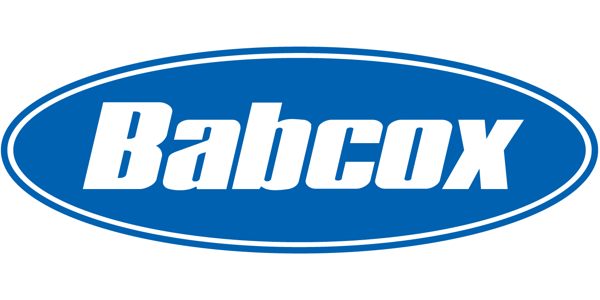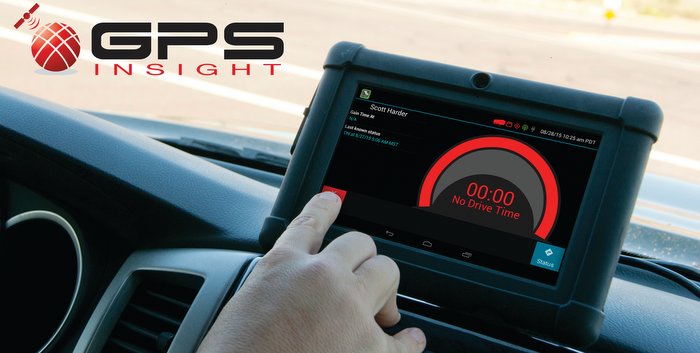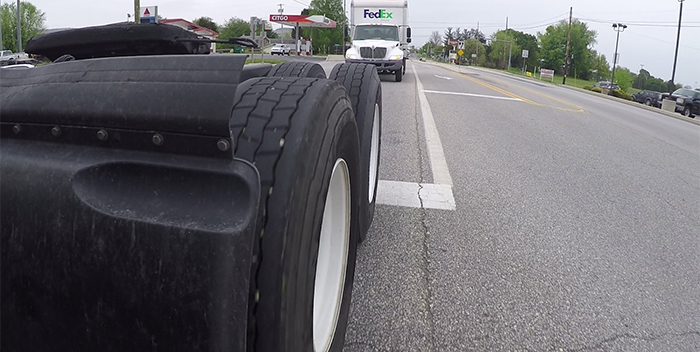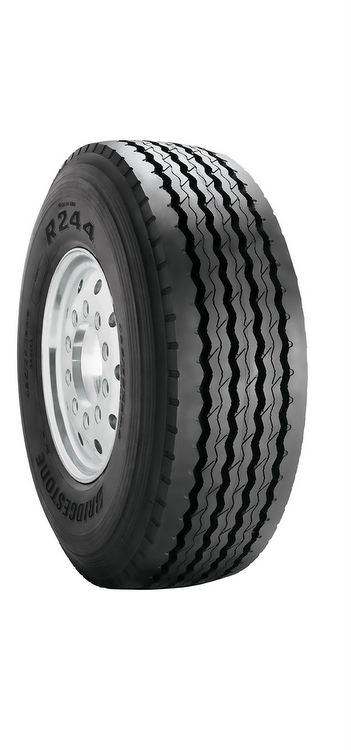There are some basic considerations fleets may want to consider when choosing the right software. “Because each vehicle maintenance software vendor takes a different approach, fleets should evaluate the software and the company supplying the software,” says Ed Cooper, president and owner of Squarerigger Inc. “Small fleets should gauge whether the software is geared toward centralized or distributed data input. Centralized data input is where one or two users can enter all data including but not limited to work orders, fuel tags, purchase orders and PM inspections. Distributed data entry differs in that it allows the parts manager, as an example, to have his/her own screens, which are not encumbered by data entry screens that do not apply to the parts department.”
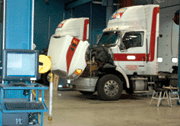
He goes on to note that everyone talks about ease of use. All software companies claim it, but it is the responsibility of the fleet person to make this evaluation based on the specific characteristics of the staff. Does the fleet have specific requirements, which might be considered beyond the capabilities of most vehicle maintenance software systems? As an example, does the fleet require the ability to track multiple meters on the same asset? Does the fleet use more than one type of fuel on the same piece of equipment? Is on-the-road repair tracking an issue? Reporting should, of course, be thoroughly investigated.
“Squarerigger, in some cases, requests that anyone evaluating vehicle maintenance software, look at the reports first,” Cooper says. “With over 350 canned reports it can take time. The end result, however, justifies the means because it doesn’t matter how well software collects the data if it doesn’t generate true business intelligence via its reporting capabilities. So, before contacting a vendor, write down your requirements after talking to all the key players in your organization.”
According to Rick Rosenberg, president and owner of TMT Software, “Fleets should seek system capabilities that are needs-driven, easy to use, highly integrateable, address cost control and work flow process improvements. Tracking of preventative maintenance, parts inventory, repair orders and warranty are the cornerstones of effective maintenance software. Operationally, maintenance software should capture that information and integrate seamlessly with other contiguous business applications like fuel, mobile communication, dispatch and accounting.”
The benefits
Maintenance software implemented successfully brings value to the company’s bottom line, according to Rosenberg.
“Control (of fleet maintenance) begins with equipment being serviced on time at the right shop by the right mechanic and flows into parts management from purchasing to inventory to warranty,” he says. “Control also involves a totally integrated and transparent system that knows everything about all resources. The bottom line is most directly affected by purchasing and inventory management, warranty, and often the redeployment of human resources as the reentering of data becomes unnecessary.
“For example, a touch-screen technician workstation on the shop floor enables the technician to access and enter information at the time of repair, address pending repair orders or campaigns, ultimately, improving the turn-around time to get the truck back on the road. The elimination of double data entry by turning the shop into a paperless environment reduces errors, improves work flow processes, and offers cost savings.”
Cooper says, “There are so many benefits it’s hard to know where to begin. When I started this business in 1983, I couldn’t give a computer away. They were hard to use and the software didn’t do that much that couldn’t be done almost as fast by hand.”
With today’s vehicle maintenance software, you can:
• measure the performance of each technician comparing him/her to other mechanics, a book rate or fleet averages;
• track and manage inventory levels and identify obsolete and slow moving parts;
• manage downtime for equipment by predicting trends and patterns in part replacement and general failures;
• track accidents, insurance claims and recovery;
• manage parts under warranties and returns;
• schedule inspections; and
• use handheld computers to eliminate the ‘break time’ when a technician leaves his or her work area to go to a computer or kiosk on the shop floor.
Flexibility
“Fleets seeking maintenance software are looking to reduce maintenance costs,” says Rosenberg. “This occurs when accurate and precise information is collected at the source. Flexibility and integration are paramount for successful implementation of maintenance software solutions. The sharing of information through integration supports good business decisions. Letting dispatch know that preventative maintenance is due on a piece of equipment and routing that equipment to the shop prevents downtime, decreases costs in a reduction of breakdowns, and affects the overall life cycle of the equipment.”
The greatest ROI in maintenance software emanates from efficiency in workflow and processes, he says. A specific example of ROI driver is realized when maintenance data leads to the collection of warranty dollars. Every warranty dollar collected flows directly to the bottom line.
According to Karl Perry, manager of sales and marketing for Squarerigger, software flexibility is critical in today’s world.
“Years ago, fleets were happy to have any software that worked that was an improvement over their manual paper system,” he says.
Today, fleets require software that adjusts to meet their needs.
“Squarerigger has product that allows the fleet to tailor the way it runs rather than the shop having to adjust to comply with a one-size-fits-all rigidity, Perry says. “The result is less shock to the system when implementing our software, and greater acceptance by end users.”
The more flexible a package can be in adjusting to an organization’s specific needs, the more quickly it is adopted and the faster it pays back to that organization in higher productivity and reduced costs.”
Keys to integration
“Flexibility is the cornerstone of any integration effort,” Perry says. “Different vendors have their own ‘standards’ for data integration and each package has to be flexible enough to generate correctly formatted data, and accept data in a number of formats.”
Another key is cooperation between vendors. Before integration between two packages can occur, each vendor has to agree to work together to achieve that integration. This sounds like a simple concept, but any number of conflicts can sabotage the effort: corporate arrogance, “not-invented-here” syndrome (“if we didn’t write the software, it can’t be any good”), or the perception that another vendor’s solution competes.
“In today’s software world, no one software package can be all things to all users,” Cooper says. “There are lots of stand-alone packages that do a much better job at managing the niche in which they live than similar ‘modules’ offered by all-in-one vendors. All vendors must recognize this, and work cooperatively to solve business problems, not simply advance their own agendas.
“Interfaces should be seamless from the most basic fuel interface to feeding the GL, AP, and AR of accounting systems,” Rosenberg says. “Choosing what applications to integrate and making those integration points as automatic as possible affects overall operation management. Every maintenance system is driven by meters, most often miles or fuel, both of which transfer to fuel, mobile communication, or dispatch systems. The importance of planning, a well designed interface and excellent working relationships between application suppliers is seen in the transparent automated interfaces.”
Future software
The future of vehicle maintenance software is very exciting, notes Rosenberg.
“Remote access to knowledge permits management to quickly identify issues and solve them,” he says. “Using the Internet to access information whether you are a customer having equipment worked on or a mechanic looking for a part using VMRS codes is becoming an integral part of maintenance systems.”
New technologies like hand-held devices, remote access, and faster and easier-to-use data entry tools will keep maintenance software constantly improving and adding more value to the overall operation and continue to improve the accuracy and timeliness of information capture, according to Rosenberg.
Cooper says, “Our belief is that over the next five to 10 years, the pendulum will swing away from organizations deploying monolithic, all-in-one packages back to specialized, best-of-breed packages that all talk with one another. A second area of improvement, again involving integration and communication, will be increased integration of electronic diagnostic equipment data into fleet software. Today, one laptop is used to read the engine’s electronic control module (ECM) and diagnose trouble codes and another computer is used to input work orders. Tomorrow, those diagnoses will automatically generate work order labor and parts records, eliminating several data entry steps.
“Similar integration will occur from in-vehicle satellite-based systems for trouble reporting. Drivers will be able to report their own trouble tickets from the cab of their vehicles, or computers connected to the ECM will automatically transmit trouble codes to the maintenance software without any human intervention.”
Perry says, “The use of GPS technologies to monitor vehicle location will also aid with real-time trouble management. Imagine the ECM automatically reports a fault to the maintenance system, the GPS reports the vehicle’s position, and then a message appears on the driver’s console telling him or her exact driving directions to a local repair center with the capability to repair the problem. When the driver arrives at the repair center, the ECM fault data has already been transmitted to the technician along with the relevant maintenance history of the vehicle. Early communication of the issue cuts down on diagnostic and repair time, greatly reducing out-of-service time and increasing revenue for the operator.”

